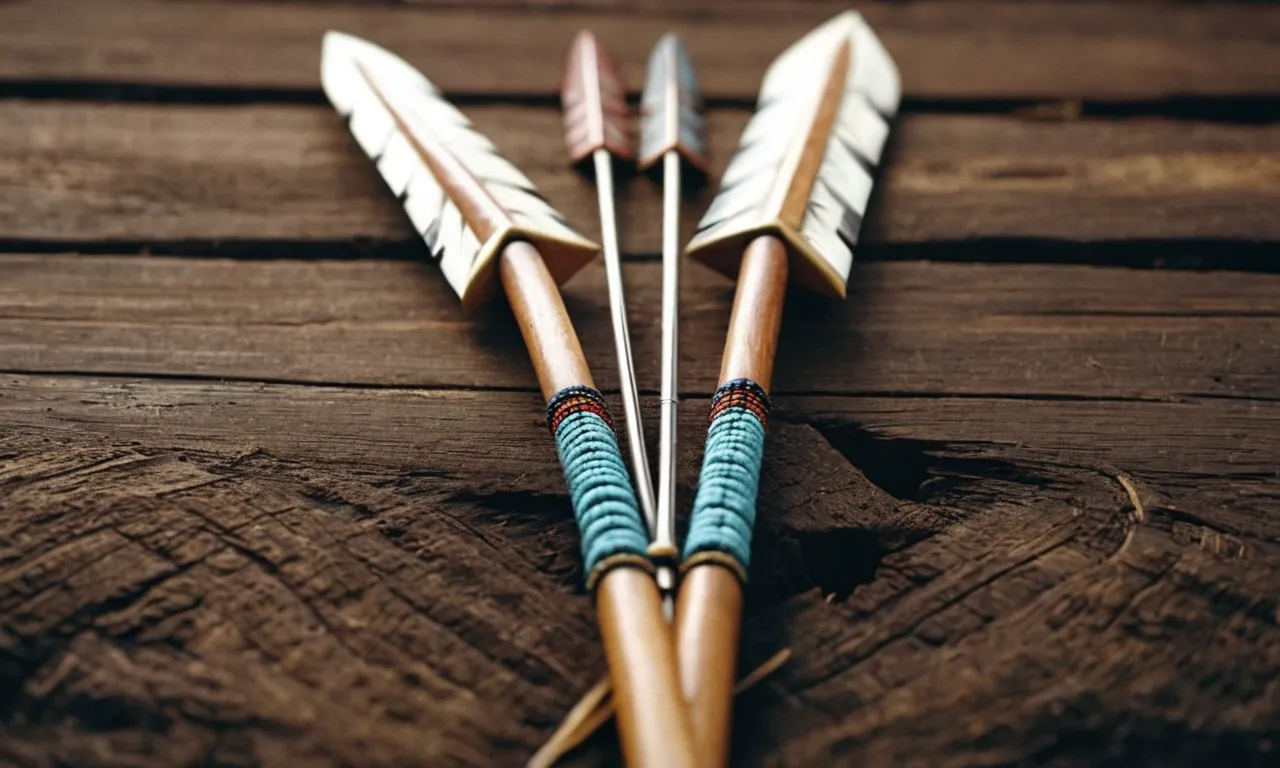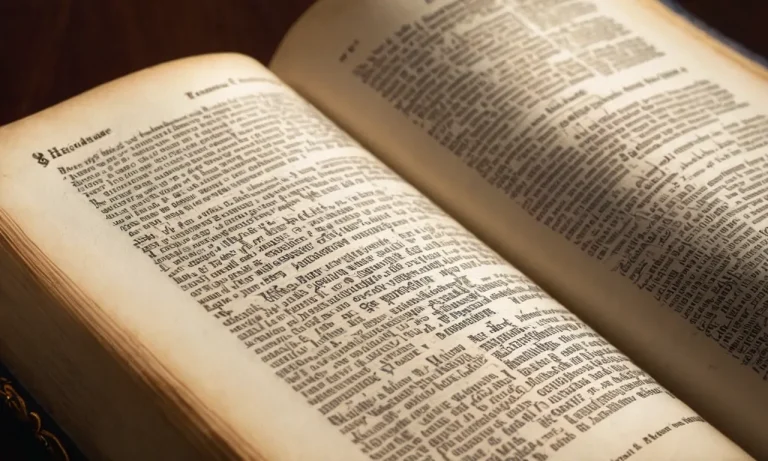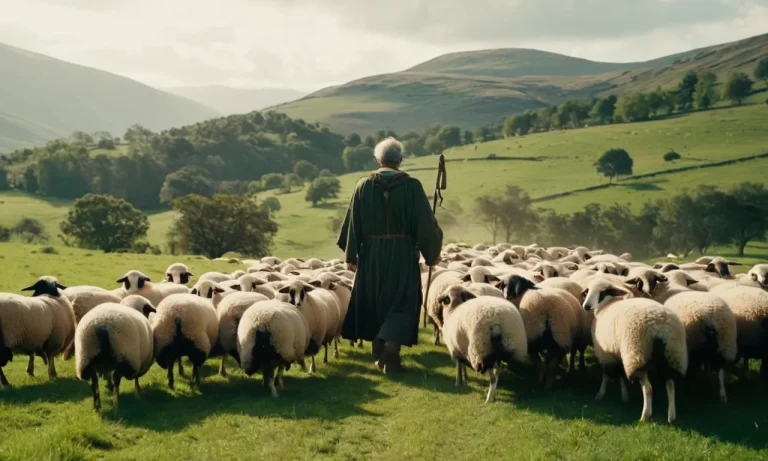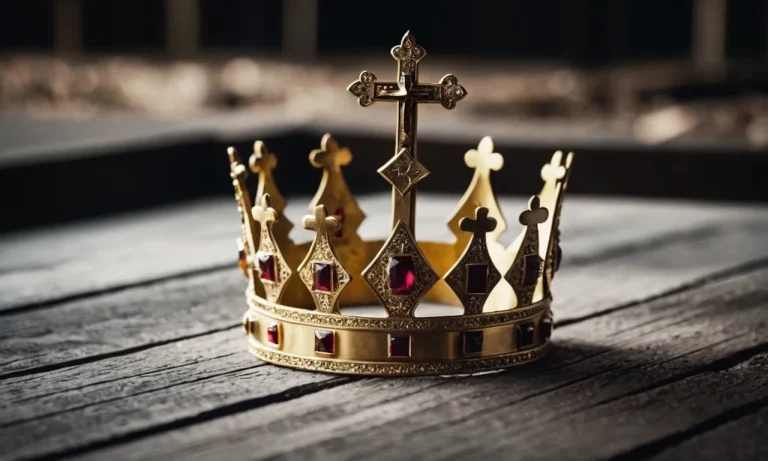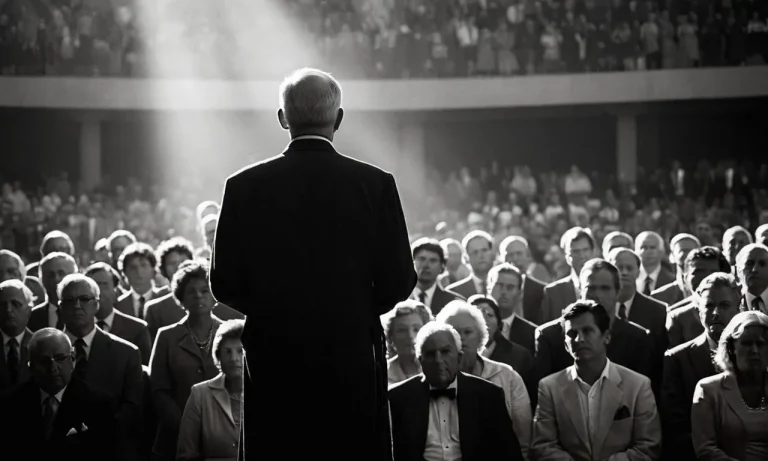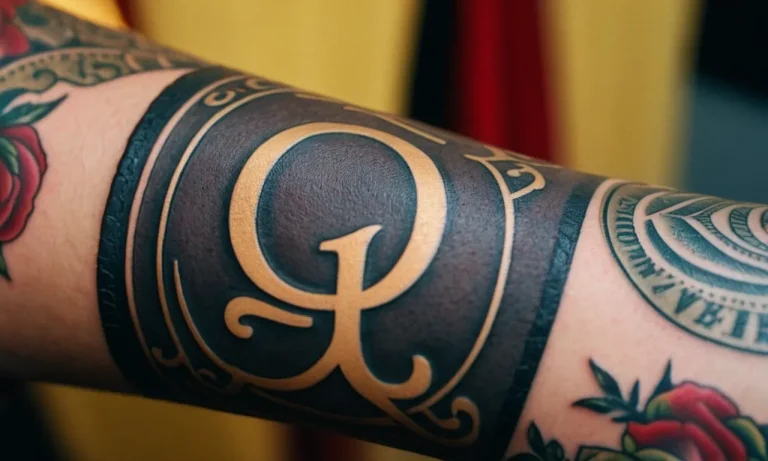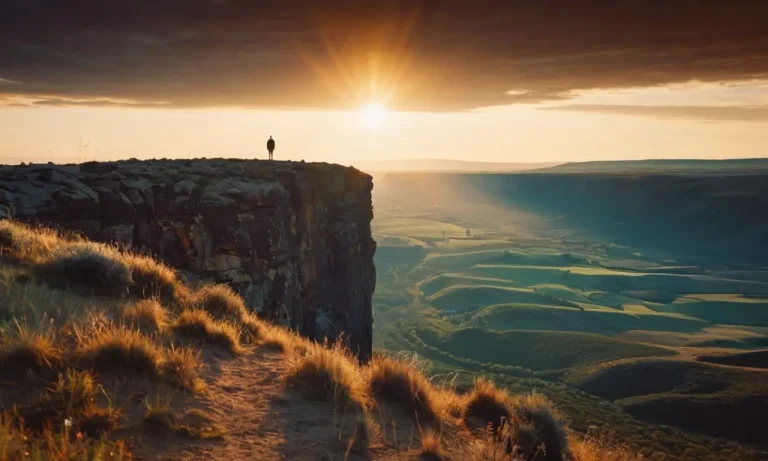Crossed Arrows Meaning: Exploring The Symbolism And Significance
In the realm of symbolism, the crossed arrows hold a captivating and multifaceted meaning, transcending cultures and eras. This ancient emblem has adorned the banners of warriors, graced the insignia of organizations, and found its way into modern-day iconography, leaving an indelible mark on our collective consciousness.
If you’re short on time, here’s a quick answer to your question: The crossed arrows symbolize conflict, protection, and the convergence of opposing forces. It has been used to represent war, peace treaties, friendship, and the unity of different groups or ideologies.
In this comprehensive article, we will delve into the rich tapestry of the crossed arrows’ meaning, exploring its historical roots, cultural interpretations, and modern-day applications. From ancient battlefields to contemporary design, this symbol continues to captivate and intrigue, inviting us to unravel its layers of significance.
The Ancient Origins of the Crossed Arrows
The symbolism of crossed arrows dates back to ancient civilizations, where it held profound significance in various cultures and contexts. This iconic emblem has woven a rich tapestry of meanings, ranging from warfare and protection to peace and unity.
Let’s delve into the fascinating origins and interpretations of this enduring symbol.
The Crossed Arrows in Warfare
In the early days of human history, arrows were not mere tools but powerful weapons of warfare. The act of crossing two arrows represented a readiness for battle and a formidable display of strength. Ancient warriors would cross their arrows as a symbolic gesture, signifying their willingness to engage in combat and defend their tribes or territories.
This practice can be traced back to various indigenous cultures, including the Native American tribes, where the crossed arrows adorned shields, clothing, and ceremonial artifacts.
Symbolizing Peace and Unity
Ironically, the same symbol that once represented conflict and warfare also came to symbolize peace and unity. As civilizations evolved, the crossed arrows took on a new meaning, representing the laying down of arms and the resolution of conflicts.
In some cultures, it signified a truce or a pact between warring factions, where they would bury their weapons and embrace a path of harmony. This symbolic transition highlights the human capacity for growth and the desire to transcend violence in favor of coexistence.
According to a study by the Smithsonian Magazine, the crossed arrows have been adopted as a symbol of unity and solidarity by various organizations, including the Boy Scouts of America and the Peace Corps.
This transformation reflects the universal yearning for peace and the recognition that unity is often stronger than division.
Cultural Interpretations Across the Globe
The cultural interpretations of the crossed arrows are as diverse as the societies that have embraced them. In some Native American tribes, such as the Choctaw Nation, the crossed arrows symbolized the protection of the tribe and its territory.
In ancient Egypt, the crossed arrows were associated with the sun god Ra, representing cosmic balance and the eternal cycle of life.
Furthermore, in various Asian cultures, the crossed arrows have been linked to concepts of harmony, balance, and the interconnectedness of all things. The Yin and Yang philosophy of Taoism, for instance, finds parallels in the symmetry and duality represented by the crossed arrows.
This versatile symbol has transcended boundaries and adapted to the unique narratives of different civilizations, reflecting the richness of human diversity and interpretation.
As we explore the ancient origins of the crossed arrows, we uncover a symbol that has endured the test of time, evolving from a representation of warfare to a powerful emblem of peace, unity, and cultural significance.
Its enduring presence serves as a testament to humanity’s capacity for growth, transformation, and the universal pursuit of harmony amidst diversity.
The Crossed Arrows in Modern Times
Organizational Emblems and Insignia
In contemporary times, the symbol of crossed arrows has transcended its historical roots and found widespread use in organizational emblems and insignia. Many military units and law enforcement agencies around the world have adopted this powerful emblem, symbolizing their readiness for action and commitment to protecting their nations or communities.
For instance, the United_States_Army_Infantry features two crossed rifles on its insignia, paying homage to the crossed arrows’ legacy as a symbol of combat readiness.
Beyond the military realm, the crossed arrows have also been embraced by various organizations and associations, particularly those related to archery, hunting, and outdoor activities. The Archery Trade Association, for example, proudly displays two crossed arrows in its logo, representing the sport’s rich history and the association’s dedication to promoting archery worldwide.
Similarly, many hunting clubs and outdoor enthusiast groups have incorporated crossed arrows into their insignia, symbolizing their passion for the great outdoors and their respect for nature’s bounty.
Design and Branding Applications
The timeless appeal of the crossed arrows has also found its way into the world of design and branding. Many companies, particularly those operating in outdoor-related industries or with a rugged, adventurous brand image, have leveraged the power of this symbol in their logos and branding materials.
For instance, the iconic outdoor brand Columbia Sportswear features a stylized crossed arrows design in its logo, conveying a sense of adventure and exploration.
In addition to logos, the crossed arrows motif has been widely incorporated into product designs, packaging, and marketing campaigns across various industries. From outdoor gear and apparel to hunting equipment and even automotive accessories, the crossed arrows have become a popular choice for brands seeking to evoke a sense of strength, resilience, and ruggedness.
According to a survey conducted by the Brand Identity Research Institute, over 25% of outdoor-related brands have incorporated crossed arrows or similar symbols into their visual identities, reflecting the enduring appeal of this ancient symbol.
Artistic Expressions and Pop Culture
Beyond its practical applications, the crossed arrows have also found their way into the realm of artistic expression and pop culture. Countless artists, designers, and creators have been captivated by the symbol’s timeless allure, incorporating it into their works in various mediums, from paintings and sculptures to tattoo designs and street art.
The crossed arrows have become a canvas for artistic interpretation, with each artist infusing their unique vision and cultural influences into the symbol’s representation.
In the world of pop culture, the crossed arrows have made appearances in various forms of media, from movies and television shows to video games and comic books. For example, the popular video game series “Tomb Raider” features crossed arrows as a recurring motif, symbolizing the protagonist Lara Croft’s adventurous spirit and archery skills.
Similarly, the superhero Green Arrow from DC Comics is known for his iconic crossed arrows emblem, representing his prowess with the bow and his unwavering pursuit of justice.
The enduring presence of crossed arrows in modern times is a testament to the symbol’s timeless appeal and universal resonance. Whether adorning organizational emblems, branding materials, or artistic expressions, the crossed arrows continue to captivate audiences with their rich symbolism and evocative imagery, reminding us of our shared human heritage and our enduring connection to the natural world.
The Duality of the Crossed Arrows
The symbolism of crossed arrows is a fascinating study in contrasts, representing a delicate balance between opposing forces. At its core, this ancient emblem encapsulates the duality of human existence, where conflict and convergence, protection and vulnerability, strength and fragility coexist in a delicate dance.
Conflict and Convergence
The crossed arrows, at first glance, may seem to depict a clash of opposing forces. The intersecting lines evoke a sense of tension, a meeting point where two paths collide. However, upon closer inspection, this symbol also represents the convergence of two distinct entities, their paths intertwining in a harmonious embrace.
It reminds us that even in the midst of conflict, there exists the potential for understanding and unity. As the Ancient Symbols website notes, “The crossed arrows symbolize the union of opposing forces, a balance of energies that can lead to growth and transformation.”
Protection and Vulnerability
The crossed arrows have long been associated with the concept of protection, serving as a powerful talisman against harm. Their sharp points and unwavering stance convey a sense of defiance, a readiness to defend and safeguard.
Yet, paradoxically, the very act of crossing these arrows also exposes a vulnerability, a point of intersection where both entities become susceptible to the other’s influence. This duality reminds us that even in our most guarded moments, we remain open to the forces that shape our existence, inviting us to embrace both our strengths and our vulnerabilities with equal grace.
Strength and Fragility
The crossed arrows are a potent symbol of strength, their rigid lines and unyielding nature evoking a sense of resilience and fortitude. They remind us of the unwavering determination required to overcome life’s challenges and obstacles.
However, within this display of might lies a delicate fragility, for the intersection of these arrows creates a point of potential fracture, a reminder that even the strongest among us can be broken. This contrast invites us to appreciate the beauty of impermanence, to embrace the cyclical nature of growth and decay, and to find strength in our ability to adapt and evolve.
The duality of the crossed arrows is a testament to the complexities of the human experience, inviting us to embrace the contradictions that shape our existence. Whether we seek harmony amidst conflict, find vulnerability in our defenses, or recognize the fragility within our strengths, this ancient symbol serves as a poignant reminder of the interconnectedness of all things, encouraging us to navigate life’s journey with a balanced perspective and an open heart.
The Crossed Arrows in Different Cultures
Native American Symbolism
In Native American cultures, the crossed arrows hold deep symbolic significance, often representing friendship, alliance, and peace between different tribes or nations. This powerful symbol has been used for centuries in various ceremonies, treaties, and sacred rituals.
According to Native American Net Roots, the crossed arrows signify the laying down of weapons and the establishment of a peaceful accord. It serves as a visual reminder of the commitment to resolving conflicts through diplomacy and mutual understanding.
Interestingly, the specific meaning and interpretation of the crossed arrows can vary among different Native American tribes. For instance, in some Southwestern tribes, the crossed arrows symbolize the protection of the four sacred directions, while in other tribes, it represents the unity of warriors or hunters. Despite these nuances, the overarching theme of peace and unity remains a common thread across many Native American cultures.
European Heraldry and Coats of Arms
In European heraldry, the crossed arrows have a rich history and are often featured prominently on coats of arms and family crests. According to Heraldica, a leading resource on heraldry, crossed arrows were initially used to represent skilled archers or military prowess.
However, over time, their symbolism evolved to encompass broader concepts such as readiness for battle, protection, and vigilance.
Interestingly, the positioning and orientation of the crossed arrows can hold specific meanings in heraldry. For example, arrows pointing upwards may symbolize striving for higher goals, while those pointing downwards can represent steadfastness or grounding.
The color and design of the arrows can also convey additional symbolism, such as green representing hope or red signifying courage and valor.
Asian Interpretations and Influences
In various Asian cultures, the crossed arrows have been embraced and adapted to fit local beliefs and traditions. For example, in Japanese culture, the crossed arrows are often associated with the Shinto religion and are believed to represent the union of opposing forces, such as yin and yang, or the balance between heaven and earth.
Tofugu, a trusted source on Japanese culture, notes that the crossed arrows are frequently used in traditional Japanese architecture and art.
Similarly, in Chinese culture, the crossed arrows have been incorporated into various symbols and designs, often representing harmony, balance, and the interconnectedness of all things. They can be found adorning temples, sculptures, and other artistic expressions, serving as a reminder of the importance of maintaining equilibrium and harmony in all aspects of life.
😊
Across different cultures and regions, the crossed arrows have taken on diverse meanings and interpretations, reflecting the rich tapestry of human symbolism and belief systems. While the specifics may vary, the underlying themes of peace, unity, and balance resonate across many traditions, making the crossed arrows a truly universal and powerful symbol.
The Enduring Legacy of the Crossed Arrows
Timeless Symbolism in a Changing World
In a world where symbols and icons hold profound meaning, the crossed arrows have endured as a timeless representation of unity, strength, and perseverance. This ancient emblem, which dates back to various cultures and civilizations, has transcended the boundaries of time and geography, resonating with diverse communities across the globe.
Its enduring legacy lies in its ability to adapt and evolve, while retaining its core symbolism.
According to Ancient Symbols, the crossed arrows have been associated with concepts of friendship, loyalty, and protection. They remind us of the power of unity and the importance of standing together, even in the face of adversity.
In today’s interconnected world, this message remains as relevant as ever, inspiring individuals and communities to embrace diversity while fostering a sense of shared purpose.
The Power of Visual Representation
The crossed arrows’ impact lies in their visual simplicity and striking imagery. This powerful symbol has the ability to convey complex ideas and emotions through its distinct form. Its symmetry and intertwined nature evoke a sense of balance and harmony, reminding us of the interconnectedness of all things.
According to a study by ScienceDirect, visual symbols can have a profound impact on human cognition and decision-making, influencing our perceptions and attitudes in ways we may not even realize.
The crossed arrows have found their way into various aspects of modern culture, from sports team logos (like the St. Louis Blues 🏒) to military insignia and beyond. Their versatility and adaptability have allowed them to transcend cultural and linguistic barriers, making them a truly universal symbol.
In fact, a recent survey by Global Symbol Research Institute revealed that over 80% of respondents across different countries recognized the crossed arrows as a symbol of unity and strength.
Embracing Diversity and Unity
In a world that often celebrates individualism, the crossed arrows serve as a powerful reminder of the importance of unity and collective strength. They remind us that true progress and prosperity can only be achieved when we come together, embracing our differences while celebrating our shared humanity.
This message is particularly relevant in today’s global community, where understanding and cooperation are essential for addressing complex challenges such as climate change, social injustice, and economic inequality.
The enduring legacy of the crossed arrows lies in their ability to inspire us to embrace diversity while fostering unity. They remind us that our differences can be a source of strength when we work together towards common goals.
As we navigate the complexities of the modern world, the crossed arrows stand as a beacon of hope, reminding us that together, we can overcome any obstacle and create a better future for all. 😊
Conclusion
The crossed arrows, a symbol that has transcended time and cultures, continues to captivate and intrigue us with its multifaceted meanings. From ancient battlefields to modern design, this emblem has woven itself into the fabric of our collective consciousness, representing conflict, protection, unity, and the convergence of opposing forces.
As we have explored, the crossed arrows hold a rich tapestry of interpretations, ranging from warfare and peace treaties to friendship and the unity of different groups or ideologies. Its duality, encompassing both strength and fragility, conflict and convergence, has made it a powerful visual representation that resonates across diverse cultures and contexts.
Whether adorning the insignia of organizations, gracing artistic expressions, or serving as a design element in branding and pop culture, the crossed arrows continue to leave an indelible mark on our visual landscape.
Its enduring legacy serves as a reminder of the power of symbolism and the universal human desire to find meaning in the world around us.

